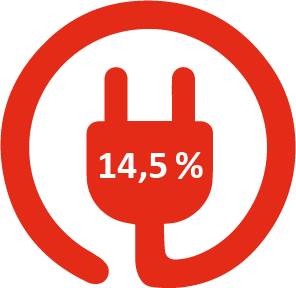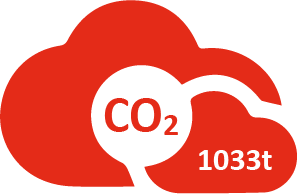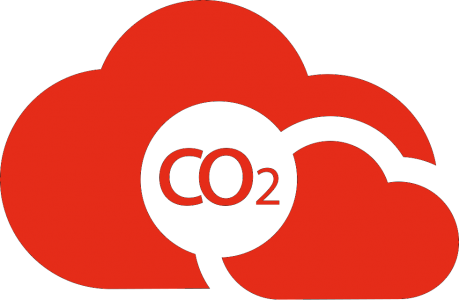Optimization of the switch-on sequence of Cooling machines and cooling towers
In industry, cooling water systems often consist of several cooling units with different chillers. The energy-efficient operation of such cooling systems is very complex. Simulation tools can provide important assistance at this point. A case study is the historically grown refrigeration system at the Reutlingen site with 13 chillers and a total cooling capacity of 27 MW. It was limit-regulated and therefore operated inefficiently. The aim of the simulation and optimization was to reduce energy demand and the associated reduction in electricity costs and CO2 emissions.
Results at a glance

Savings in power consumption
It is possible to save 14.5% of the annually required electricity costs.

Reduction of the operating hours of all machines
The operating hours of all machines could be reduced by 7% per year.

Reduction of CO2 emissions
The annual CO2-emissions could be reduced by 1033t.
Procedure: Four steps to optimum efficiency
The methodology of the simulation model to the most energy-efficient switching sequence of the cooling plants. TOP-Energy® considers does not only the power demand of single plants, but also their partial load behavior and efficiency as well as weather conditions and heat recovery potential.

1. Supply structure modelling
By suitable linearization of the partial load curves from measurement data, the complex cooling supply structure of Robert Bosch GmbH could be modeled in a simulation model.

2. Determination of switch-on sequence
TOP-Energy® calculates the optimal sequential control for the chillers and cooling towers depending on cooling demand, partial load performance of the plants and recooling conditions.

3. Seasonal operation is considered
Reduction to practical operating modes for summer and winter to enable easier implementation in technical control programs.

4. Long-term cost & emissions savings
In the application example, 14.5 % savings in electricity consumption were achieved as well as a reduction of 1033 tonnes of CO2. This is due to a higher capacity utilisation of the plants with a lower number of operating hours at the same time.
Project and Contact person

perpendo Energie- und Verfahrenstechnik GmbH
Michael Zens
Phone: +49 241 412 500 01
Mail: m.zens@perpendo.de
Brenner, A; C. Kausch; S. Kirschbaum; H. Lepple; M. Zens: Effizienzsteigerung in einem komplexen Kühlwassersystem – Einsatz von Simulationswerkzeugen. KKA Kälte Klima Aktuell, Sonderausgabe Großkältetechnik, 2014.
Download (PDF) from perpendo Energie- und Verfahrenstechnik GmbH website
